All
Tank Monitoring Transforms
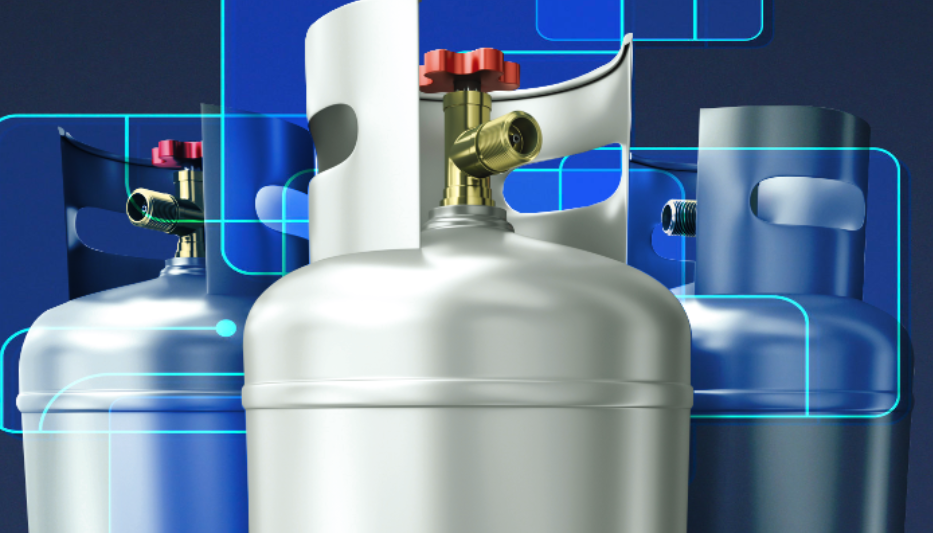
How the devices, the software, and their providers are responding to fuel dealer needs
Fuel delivery companies don’t just deliver fuel. Even if that remains your central focus, even if you don’t service equipment at all, even if your company is a one-man, one-truck operation, the business of delivering fuel is multifaceted.
There’s the customer service component, delivering comfort and peace of mind. There’s the business management aspect, logistics and transportation, sales and marketing. There could be bulk storage, pricing programs, hedging, and so on and so on.
Tank monitoring companies don’t just monitor tanks. They collect and report data, manage and utilize it in a number of different and exciting ways, and empower fuel delivery businesses to become more efficient, able to do more with less.
That was true before COVID-19, and it’s even clearer today (for much more on this topic, see “Tank Monitors Aid Dealers & Customers Amid COVID-19 Crisis” from our August 2020 issue). But the pandemic isn’t the only change driver for tank monitors, nor is it the only major disruption presenting challenges and opportunities for today’s heating fuel dealers.
There are also big, potentially seismic, technological shifts taking place. There’s encroachment from electric and natural gas utilities. And, of course, there are the users – you fuel delivery providers and your customers. Just as every heating fuel business has many components, each has different needs.
The companies that manufacture and sell tank monitors recognize this. Because they don’t just monitor tanks — they monitor the needs and demands of their clients, they adapt, and they respond accordingly.
Universal Solutions
Although many fuel marketers today sell a number of different fuel products — heating oil, propane, biodiesel, on- and off-road diesel, marine fuel, gasoline, lubricants, et al. — there are some common expectations for all tank monitoring devices and platforms.
Mike Eddings serves as director of Fuels and Lubricants, North America for Anova, a company that offers remote monitoring solutions for a number of different industries across the globe. “The fundamental requirements of a remote monitoring program remain relatively consistent,” Eddings says. “A monitor should be easy to install and verify, it should operate reliably in the field, providing regularly scheduled, accurate readings of tank levels, and the supporting solution should provide new insight that drives new efficiencies in the vendor’s operation and drives increased profits.”
In addition to these fundamentals, many of today’s monitors offer a number of updated software capabilities. Eddings cites “mobile field apps to gather tank geometry and out-of-the-box inch-to-gallons (or pressure-to-gallons) conversions” as two “hallmarks of best practice tank monitoring software solutions.” If you read over the parenthetical there, take a second look because it speaks to one of the most fundamental differences between oil and propane tanks, as well as the ability of a monitoring company to serve both.
“A key differentiation on an oil tank monitoring program is built-in support for tank strapping charts,” Eddings adds. “LPG is also typically measured in usable tank percent, whereas fluids are typically measured in inventory units (gallons) or Ullage (the amount of product a tank can accept).”
To help address these differences and a range of others, earlier this year Anova introduced its Universal Tank MonitorTM (UTMTM). With a number of sensors included — tank level, pressure, and more — this device gives users the versatility to monitor multiple tanks at once or to track a combination of metrics for a single tank.
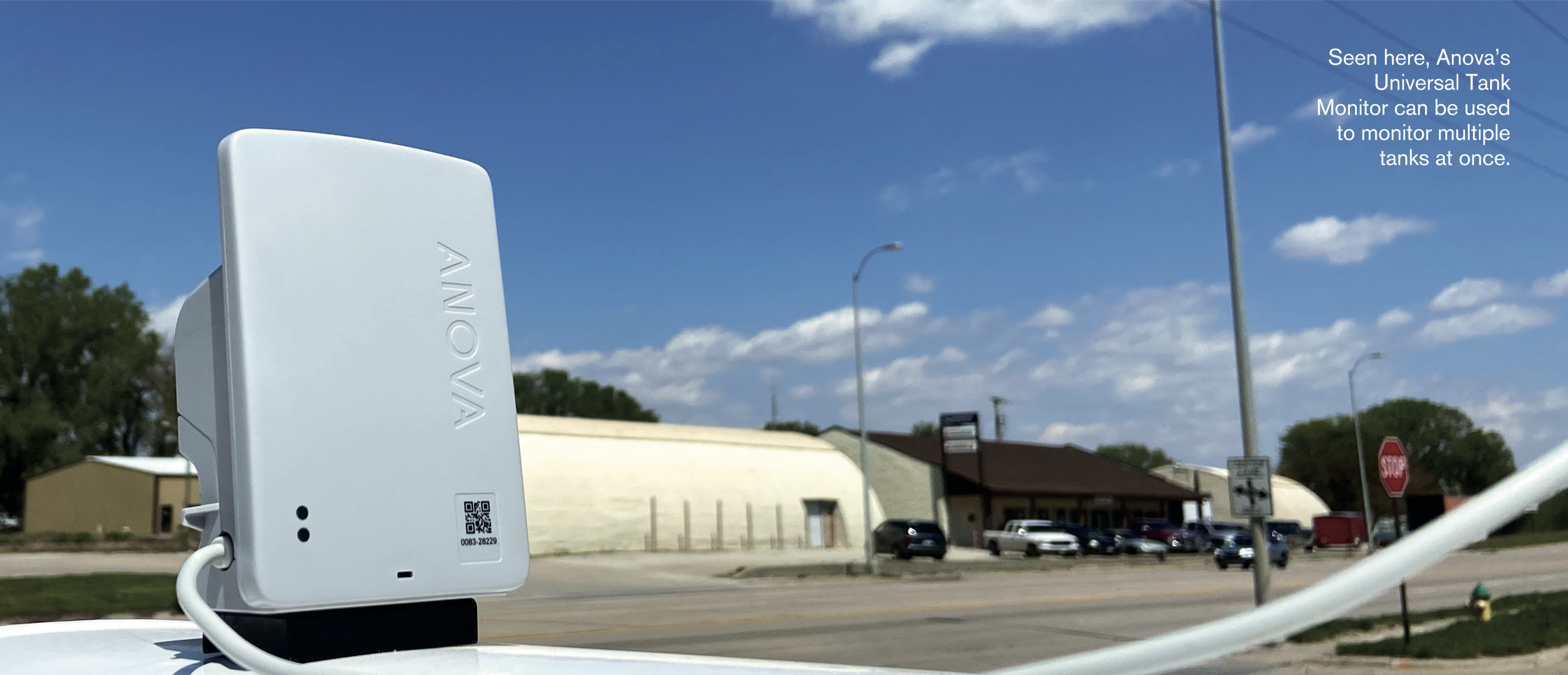
Underground & Under Lids
The ability to geo-locate tanks in the field is surely a helpful addition to any heating fuel dealer’s toolkit. And being able to compare data across a network of monitored tanks is even better.
But what about those tanks that aren’t as easy to see or access in the first place? What about underground tanks? Montreal-based monitoring company Otodata hears these questions and others and responds in turn.
“At Otodata we’re listening to our heating fuel marketers and have designed technologies specifically for their industry,” says company president André Boulay. One example is Otodata’s recently introduced universal lead design. “Otodata’s universal lead accelerates deployment by fitting on any tank above and below ground, with any dial, and provides extreme accuracy,” Boulay says.
The monitor even includes a “heavy-duty, anti-rodent wire” to fend off rats, mice and other critters with an appetite for electronics!
If that sounds like a novel feature, Otodata isn’t done there. How about a tank that practically monitors itself?
Last year, Otodata teamed with cylinder manufacturer Worthington Industries to develop the SmartLid®, which Boulay describes as a “tank monitor hidden within a protective, durable lid.”
While not exactly a tank that monitors itself, the SmartLid delivers one integrated solution, and from the customer’s perspective it’s all part of the same convenient package. “Clients love the easy installation, and sales have exceeded all expectations,” Boulay says, noting that Otodata and Worthington plan to add more products to the SmartLid line in 2022.
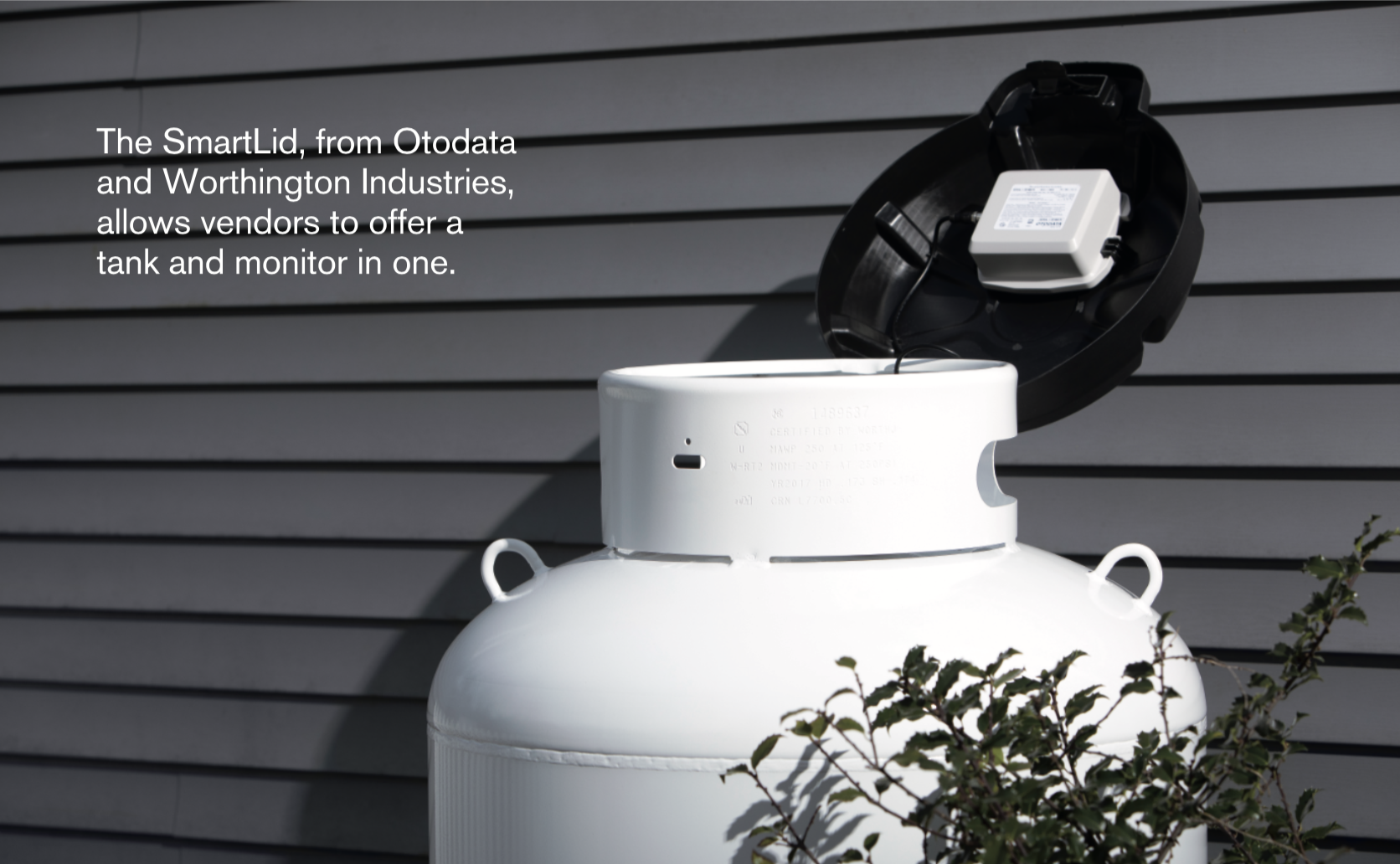
The Necessity of Convenience
Before the pandemic began, many fuel marketers saw tank monitors as a useful convenience, but since then, this convenience — like many others — has proven to be essential. This may be especially true for remote areas, where businesses and communities are even more vulnerable to adverse economic impacts like labor shortages.
“The pandemic’s effect has undeniably changed the landscape of how companies conduct business now and into the future,” says Jim Schwartzfisher, Telemetry Unit manager at propane equipment distributor Bergquist Inc. “The biggest area hit during the pandemic has been their workforce. This labor shortage has forced companies to do the same or greater workload and with less [manpower]. Unfortunately, this does not appear to be a short-term issue. To counter this, companies must operate more efficiently. This is where tank monitors show their worth.
“With real-time tank data, monitors allow companies to flex their efficiency muscles,” Schwartzfisher continues. “Deliveries to tanks with levels greater than 40 percent can be eliminated. Routes become more streamlined. The resources are focused on the ‘needed’ deliveries. This efficiency saves businesses in many areas, such as payroll, fuel costs, and equipment wear and repairs.”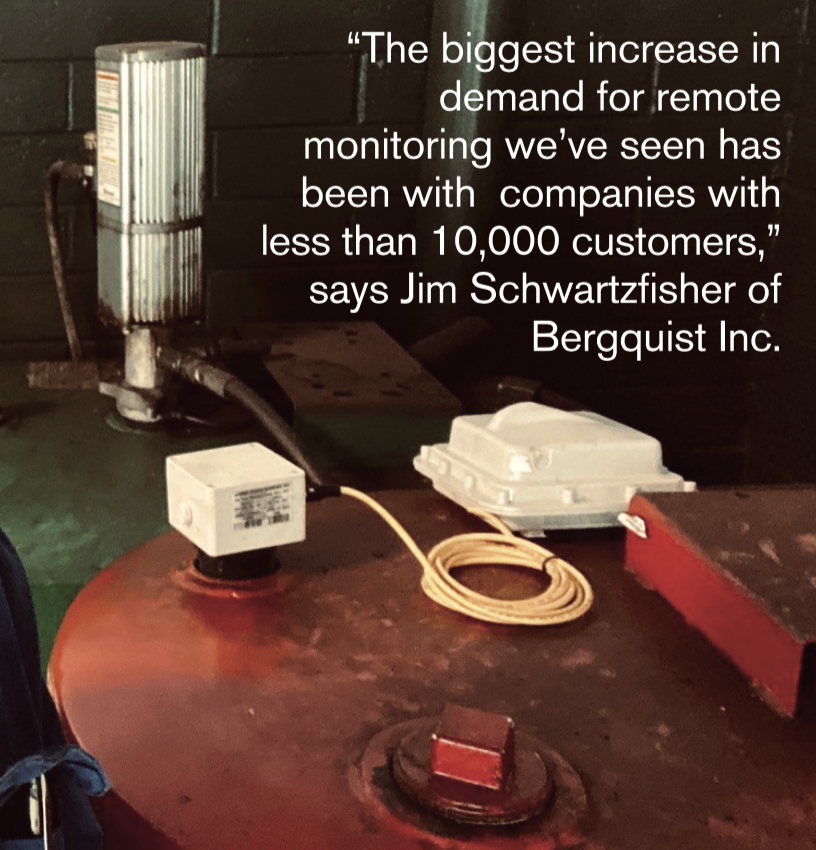
Unfortunately — or fortunately, depending on where you stand — the irregular usage and demand spikes caused by the pandemic don’t seem to be going away anytime soon either. “This year businesses are re-opening and hybrid work is taking off, so usage patterns are still just as irregular and unpredictable as they were in 2020,” says Amos Epstein, CEO and founder of Tank Utility. “Monitors are the only way to reliably predict usage because traditional forecasting methods don’t work in this scenario.”
A pioneer in consumer-facing tank monitors and monitoring apps, Tank Utility sees demand for these solutions increasing in light of the pandemic. “This is especially true for new homebuyers who left the city to live in rural and suburban areas,” says Epstein. “Many of these folks have propane heating for the first time, and an app that enables them to see their usage in real time makes propane feel more familiar to them and more like a utility.”
Beckett, a name that should be familiar to all readers of this magazine, recently rolled out a tank monitoring platform of its own, complete with a consumer-facing mobile app called myTechnicianTM as well as a connected tank gauge, WiFi hub and dealer dashboard.
“In this topology, the gauge measures tank levels using ultrasonic high-frequency waves and sends the measurement data to the WiFi hub over a long-range Bluetooth® channel,” explains Amir Pasdar, Ph.D., IoT product manager for Beckett. “The long-range technology is much higher-powered than traditional Bluetooth devices and surpasses the usual 30-foot connection range, allowing for placement of the hub in any convenient space within 150 feet of the connected devices.”
That might sound complex, but the end result is a simple, easy to install, efficient, and direct tool for connecting dealers, customers and tanks in the field. Plus, the connected tank gauge boasts a longer battery life than WiFi-based monitors (up to 10 years).
Carefully Defining Optimization & Analytics
As fuel dealers look to increase efficiencies across the board, “optimization” and “analytics” have become buzzwords in the industry and not just with tank monitoring companies, but for some trade publishers too.
Oil & Energy asked Phil Baratz, CEO and founder of Angus Energy, whether “over-optimizing” delivery routes poses any risks, like sludge building up in older tanks that are allowed to run closer to empty.
“There is always a risk of over-optimizing, but we don’t view large deliveries as being the definition of ‘optimization,’” Baratz clarified.
“Optimization is the delivery of all gallons, with a very low likelihood of runouts (or being negatively impacted by sludge), while achieving maximum profitability,” he continued. “In order to get there, you have times to go deeper into the tank and other times where you need to create extra elbow room. It is our view that the true benefits that lead to profit optimization are those that incorporate tank monitors into an overarching and automated plan, which includes non-fixed reserve levels (a.k.a. changing the optimal fill based on defined rules and metrics), while planning for deliveries in a way that includes consideration of both the fleet and the availability of drivers. Monitors are definitely part of that optimization, but if the goal is simply to drop the reserve by 20 gallons, we believe that you may be setting yourself up for trouble.”
Asked what sets apart the different players in the analytics space, Baratz questioned our definition of that word, too. “If you are comparing back-office systems to each other, I would have to say that all work and all do a reasonable job of what they are supposed to do – including calculating Ks, HDD-Next, etc.” he said. “However, I don’t believe that they are primarily analytic providers as it applies to optimizing deliveries.”
Where a back-office system (BOS) uses dealer data to spit back (“good enough”) predictions about customers’ fuel consumption, (“next-level”) analytics platforms like Angus Energy’s ADEPTTM integrate with the BOS to deliver optimization in the true sense of the word, i.e., not just fewer deliveries with bigger drop sizes, but better overall operations efficiency.
“ADEPT is a set of algorithms that uses the tools of the BOS, in combination with a set of rules decided upon by the dealer and creates an optimized set of deliveries for the upcoming year, based on all of the data available at that time,” Baratz explains. “Then, as facts always change (customers gained or lost, HDDs turning out to be colder or warmer than forecast), ADEPT reruns the algorithm every few days to keep seeking the most optimal way to deliver.”
Baratz likens the process to the Waze GPS app “recalculating” commuter routes, albeit without voice-actor accompaniment.
There’s also a machine learning component that should make the algorithm work better the more it’s run, and can help dealers account for “delivery outliers,” i.e., individual customers with truly erratic and unpredictable usage patterns.
Cost Decreases Open Up Market
With all these new innovations coming to market, one might assume that only the biggest, most technologically advanced heating fuel companies would be able to afford the latest tank monitoring devices and software. However, according to Bergquist, it’s the opposite.
“The biggest increase in demand for remote monitoring we’ve seen has been with companies with less than 10,000 customers,” says Schwartzfisher. One factor allowing more small companies to adopt and deploy tank monitors is the availability of hardware-as-a-service (HaaS) options.
“The Anova Haas option allows a vendor to engage in a monitoring program without having to spend the upfront capital costs of purchasing the monitoring hardware,” Eddings explains. “The offering bundles monitoring hardware, software, communications, and more into one easy, monthly subscription. The Anova HaaS program allows a vendor to monitor more tanks, save on distribution costs and drive rapid operational returns.”
As vendors have the option to ‘graduate’ to product purchases, HaaS may function similar to a rent-to-own arrangement.
According to Schwartzfisher, programs like this — along with the advent of more affordable monitoring systems that do not sacrifice functionality or reliability — represent the telemetry field’s biggest advancement of the past decade. “These lower financial commitments have allowed many companies entry into the telemetry market without the monetary constraints,” he says.
Additionally, Bergquist and some other tank monitoring providers offer “demo” programs, whereby free devices and software can be installed on a trial basis. If the fuel dealer is satisfied with the results, they can then elect to move forward with HaaS subscription or purchase the systems outright.
A Transformative Transition
As the heating fuel industry faces new challenges, and customers’ needs become less predictable, more and more dealers are coming around to the idea that the old ways of doing business simply won’t cut it anymore.
“There is a notable shift, but not as quickly as I would have expected,” says Baratz. “K-factor deliveries are very often referred to as ‘good enough’ … but there is a definite recognition that knowing what is in the tank can lead to much better outcomes than ‘good enough’ guesses.”
No doubt, the need for greater visibility and predictability is helping to drive the tank monitor market forward, but so are falling costs and the continuing evolution of the liquid heating fuels industry overall.
The game is changing for fuel dealers and, as partners to this industry, tank monitoring companies are responding in kind with new devices, software, apps, and subscription platforms, among other offerings.
Taken together, these innovations represent a virtual transformation, and for an industry in transition, the timing couldn’t be better.
Related Posts
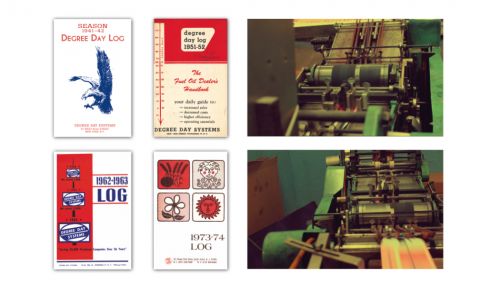 100 Years of Helping Fuel Retailers Deliver!
100 Years of Helping Fuel Retailers Deliver!
Posted on August 18, 2025
 U.S. Competing to Secure Critical Minerals
U.S. Competing to Secure Critical Minerals
Posted on June 16, 2025
 The Clean Air Act, the EPA, and State Regulations
The Clean Air Act, the EPA, and State Regulations
Posted on May 14, 2025
 Day Tanks Support Back-up Generators in Extreme Conditions
Day Tanks Support Back-up Generators in Extreme Conditions
Posted on March 10, 2025
Enter your email to receive important news and article updates.
